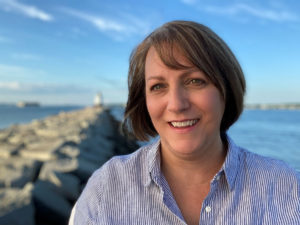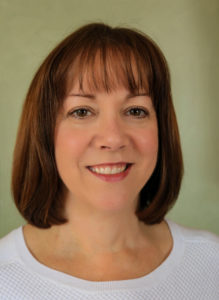Julie L. Mueller, Ph.D., Southern Maine Community College
Eric Loepp, Ph.D.,University of Wisconsin-Whitewater
Jane E. Frisch, M.S., Clinical and Counseling Psychology
As institutions of higher education struggle to respond to the COVID-19 pandemic, professors are considering how to move their classes online in a way that will continue to provide a high-quality experience for students.
The switch to remote learning poses particular challenges for Political Science professors. Students from diverse backgrounds and experiences come together in our classes to explore what are often controversial or contentious issues. Today, they do so during a period of considerable collective anxiety as well as political polarization. It is no surprise during political discussion many students  may not feel included, listened to, or able to learn effectively.
may not feel included, listened to, or able to learn effectively.
These challenges can be partially mitigated through social regulation that naturally occurs in physical classrooms, where facial cues, intonation, and simply proximity and synchronicity support civil and nuanced conversations. However, they are not nearly as accessible in an online setting. It is therefore crucial that professors cultivate a sense/feeling of community in their online classrooms, to create spaces where students feel safe to share their own thoughts and experiences, challenge each other respectfully, and, ultimately, grow academically and personally through their interactions with classmates.
How, then, can professors create a feeling of community in an online class, especially when the political climate of the United States is increasingly divisive and combative? Below we offer a series of strategies that instructors may find helpful at promoting community in their online courses. A number of them also link directly to additional resources and best practices.
Setting Up The Course
- Follow suggestions for creating a welcoming environment in online classes in general, such as including ice breakers at the beginning of the semester, humanizing yourself through videos and discussion posts, having group activities, and modeling expected behavior.
- Have the class work together to create a “course contract” to govern group discussions. Use a Google Doc or similar tool to collate suggested rules of conduct from individuals. This helps achieve student buy-in early in the course. Do this in the first week of class (if you have a synchronous class, create the doc together in real time); when students break the rules, send them an individual email or DM, rather than calling them out in public. Offer suggestions concerning how they may have made a similar point in a more productive way.
- Use student surveys to find out how students are feeling about the class discussion environment in your course, perhaps at the beginning of the semester and at the mid-term. You may also wish to offer the students an opportunity to revise/expand the course contract you created at the beginning of the term.
- Add a statement to your syllabus emphasizing the importance of supporting positions with reliable evidence, respecting others’ viewpoints, and creating an open learning environment.
In the Classroom
- Rather than focus solely on the politics of the “scandal of the day,” focus instead on the course concept(s) most applicable to it (e.g. what are the emoluments clauses and why were they added to the Constitution?)
- Ask open-ended questions in assignments; model varying viewpoints and respect in your own responses
- Model the online behavior that you expect from your students. Be aware of your own biases and emotional reactions to issues. Strive to create an inclusive classroom.
- Make an effort to draw on examples from a variety of sources when discussing issues like parties and media bias; your credibility benefits when students see you acknowledge a variety of viewpoints
Assignments and Exercises
- Have students write about how their own political views were formed. This can help them understand how a person’s culture, history and life experiences can influence their political beliefs.
- Students come to the class with their own prejudices and biases, and they may be unaware of how these beliefs affect the way they interact with people who hold different opinions. Assign an essay to read early in the term, such as: Brene Brown “Dehumanizing Always Starts with Language”
- Critical thinking is a skill, and students need practice to get better at it. Explain what types of questions good critical thinkers ask, then have them practice with some exercises. For instance, you can set up formal debates using a tool like Kialo-edu that randomly assign students to the pro or con side of the debate; the process of preparing for the debate requires students to gather as much evidence from reliable sources as possible to support their arguments
- Present two sides of a controversial issue with articles/videos you have selected; have students practice summarizing the argument and supporting evidence in each; the Taking Sides series can be helpful
- Many students need help distinguishing between reliable and unreliable news sources. Explain what makes a reliable source, and give examples. You may even create an assignment in which students must create a set of rules for evaluating a political news story or data claim.
Political conversation can be difficult regardless of the course modality, and the online environment poses some unique challenges. However, it also presents its own opportunities to engage with material in thoughtful and deliberative ways that are not necessarily possible in face-to-face settings. For instance, online discussions allow students and instructors to take time to carefully formulate and write out their thoughts before commenting/responding. Focus on the many positive aspects of online teaching, and give yourself space and time to try different ideas and approaches as you identify what works best for you. This is especially true during the pandemic: there are many new technologies, policies, and procedures governing higher education for the foreseeable future. Practice self-compassion and keep in mind that this is a learning experience for you, too.
Some additional resources to support community and inclusive teaching in political science:
- Brown University’s Sheridan Center
- Andrew Greer, “Increasing Inclusivity in the Classroom”
- TED Talk: Michael Sandel, “The Lost Art of Democratic Debate”
- National Institute for Civil Discourse
 Julie Mueller is an associate professor of Political Science at Southern Maine Community College, where she teaches all the sub-fields of political science. Her research interests include the International Monetary Fund and economic development, and her work has been published in Global Society and Middle East Critique. She is most recently the author of an essay on pedagogy titled “Oh yeah, there’s always community college,” in Pedagogical Journeys through World Politics: Adventures in Teaching.
Julie Mueller is an associate professor of Political Science at Southern Maine Community College, where she teaches all the sub-fields of political science. Her research interests include the International Monetary Fund and economic development, and her work has been published in Global Society and Middle East Critique. She is most recently the author of an essay on pedagogy titled “Oh yeah, there’s always community college,” in Pedagogical Journeys through World Politics: Adventures in Teaching.
Eric Loepp (Ph.D., University of Pittsburgh) is an assistant professor of political science at the University of Wisconsin-Whitewater, where he teaches courses in American government, political behavior, and research methods. His research focuses on candidate evaluations and electoral decision-making, particularly in primary elections. This work has been published in such journals as Electoral Studies, the Journal of Elections, Public Opinion, & Parties, Research & Politics, American Politics Research, and PS: Political Science & Politics.
 Jane Frisch, M.S., received her master’s degree in Clinical and Counseling Psychology from Chestnut Hill College in Philadelphia. As a clinical intern, she counseled students at a community college and has also worked with adolescents in a residential treatment facility. She is passionate about helping students care for their mental health and believes in creating an inclusive campus where all voices are valued
Jane Frisch, M.S., received her master’s degree in Clinical and Counseling Psychology from Chestnut Hill College in Philadelphia. As a clinical intern, she counseled students at a community college and has also worked with adolescents in a residential treatment facility. She is passionate about helping students care for their mental health and believes in creating an inclusive campus where all voices are valued





